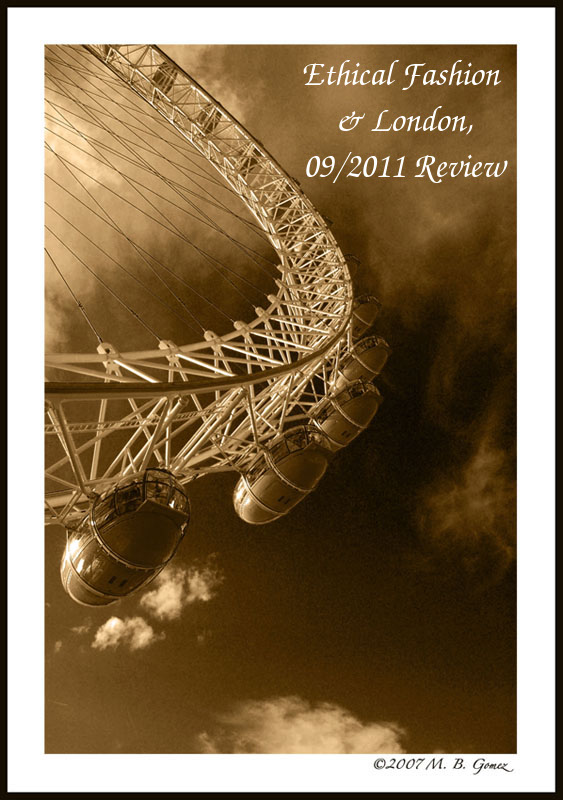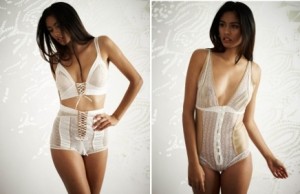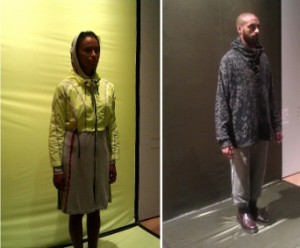 You will have noticed: Shirahime has not been posting on a daily ‘Fashion Week’ level as of late. The reason being simple: there’s – in my humble opinion – not enough interesting, insightful, stuff going on ‘out there’ in the fashion world to justify a post on every day of a fashion week, be it London, Paris or Berlin.
You will have noticed: Shirahime has not been posting on a daily ‘Fashion Week’ level as of late. The reason being simple: there’s – in my humble opinion – not enough interesting, insightful, stuff going on ‘out there’ in the fashion world to justify a post on every day of a fashion week, be it London, Paris or Berlin.
By this I mean, it’s not enough ‘substance over style’, or even better: a good combination of the two.
[Note: pun intended. I recommend a reading of the Ethical Consumer’s most recent publication ‘Style over Substance’, adequately published at the beginning of LFW last Thursday].
I know, I know, the British Fashion Council (BFC) is not of the same opinion, after all LFW received a fair bit of (unjustified?) buzz in the past couple of weeks, and there’s been plenty of ‘best-LFW-in-a-long-time’ type of publications, too. What with broadsheets wanting to make us believe that London still is the navel of worldly fashions.
But then again the BFC cannot be bothered much with online media outlets either … For them, essentially, it’s still about broadsheets. But let’s move on to more interesting and educational things than the BFC, as otherwise this post will turn into something even more unsuitably subjective.
So it happens that – in continuation of the last post – overall the same issue prevails at LFW as at other fashion weeks: Being sustainable isn’t considered cool. Or favourable for business for that matter; plus EstEthica keeps falling a wee bit short of the ‘innovation’ factor with the core group of brands being the same across the last few seasons …
In fact, in only a superficial walk through the non-EstEthica section of LFW, I discovered the Design Collective Scotland – at least 2 members of which would likely have fitted the EstEthica bill – as well as 2 more fairly interesting brands: Fiona Paxton collaborates with Indian traditional jewellery makers, adhering to fair trade principles and supporting them so that their expertise won’t die out; and The Cobra Society employs Tunisian rug makers of 2 villages to produce what is the raw material for their boots and shoes. And don’t be surprised: their designs are rather worth wearing …
But it’s not only sad news and indeed gems could be found, and lessons be learned. It just was a question of looking, finding and making an effort.

For starters, THE highlight of this year’s EstEthica was surprising, but no doubt extremely merited: Charini – a recently launched Sri Lankan luxury lingerie brand. Charini btw. is also the winner of the Sri Lanka Design Festival’s Ethical Fashion Award 2010.
The brand is a gem in various aspects: The designer defines what ‘ethical practises’ mean in her specific context (have a read of their website’s ‘ethical lingerie’ section– something yet to be seen in other brands); and the designs are suitable from size 8 to 12, possibly 14 depending on the bust – and there will be work done to work with larger sizes. And finally – the brand has a compelling story behind it, which revolves around hand-weavers as well the preservation of high-end craftsmanship in Sri Lanka.
The next highlight was EcoLuxe, and that in 2 ways. First, the new, larger, brighter and much nicer location proves that this collective effort is growing, and – hopefully – here to stay as part of London Fashion Week.
But second, and more importantly, while there is less money involved on the exhibition’s side, the design quality of what is available and visible is, I’m tempted to say: substantially, higher than at EstEthica; and: being an emerging, barely known yet eco luxury brand, is in this context not a mutually exclusive combination with showing in-line with more seasoned brands of similar qualities.
I sincerely hope that EcoLuxe will keep growing for a few more seasons, and then settle into being a fixed name in the whole LFW circus …
Personal side note: it’s a rather friendlier and more insightful atmosphere, too, when chatting with the designers …

- Invitations were held to a basic slip of paper (one 6th of an A4) with the attendees name printed, accompanied with offcuts from the collection’s fabrics.
- Decorations were studio-made left-over squirrels – this season’s collectable pet – and their oversized inflatable varieties in jazzy parachute colours.
- Collection: Well, it’s Reaburn after all … watch out for the relief-map type of print fabrics.
- Presentation format: Simple and effective. 3 sets of about 10 (amateur, i.e. ‘real life’) models rotating in approximate 5 minute intervals. Each garment is shown in front of a simple but cocky coloured background resonating with the colours and fabrics used in the design (cf. picture).
- Entertainment: In a separate room, each garment of the collection was wired to microphones. Upon touching, the impulses would used to generate a sound carpet in the room, as well as animate a light installation. Needless to say that the clothes were getting a fair touch-down.
- Take-home info: More is less. A A6 sized look book, a short summary of the brand and this season’s inspiration, a Museum of London Oyster card holder, all wrapped in a sun-glass case sized zip up bag made from what what will be off cuts of above mentioned print fabric.
Simple, effective, spot on, me thinks.
But one question kept, and keeps bugging me, also – or particularly – after this seasons LFW:
Why, when there are highly talented accomplished (and sustainable) designers, the press keeps spilling their ink about loud prints, doubtable talent, and high-investment fully corporate brands? Notably – BFC and LFW pride themselves of a market ‘exceptionally enterpreneurial’, yet other than in the designer’s exhibition in Somerset House there’s little of that innovative feel to it, and certainly hardly any when following what both broadsheets and bloggers tend to talk about.
Where do the talent hunters look? Or are they just fishing in their own, familiar pond?
So much talent, so few well connected ‘talent spotters’ willing to make a difference in terms of ‘good’ design – in every aspect of the word. Maybe it is, that tradition, not innovation, is what we’re strong at, after all.

